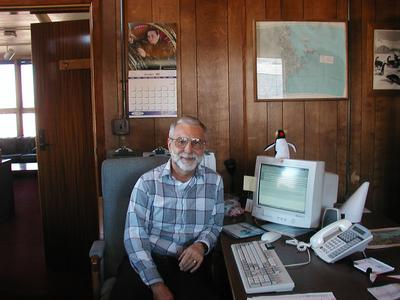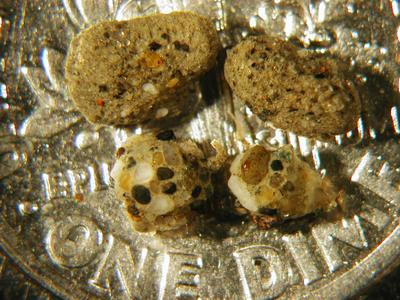
|
|
8 December, 2001

I met with Dwight Fisher, the NSF representative at McMurdo, to thank the National Science Foundation (NSF), for granting me the opportunity to parcticipate in a field research project in Antarctica. My main goal is to share this experience with teachers and students in order to bring science research into classrooms, as well as pull students into learning. Dwight Fisher has come to Antarctica many times since 1982. He first came to Antarctica with the navy. He flew a C-130, but he has been with the National Science Foundation for the past ten years. The National Science Foundation oversees the U.S. Antarctic Program and awards grants to further science research. NSF relies on support from contractors, the U.S. military, and the Coast Guard to keep operations running smoothly. There are three U.S. research stations in Antarctica: McMurdo; the Amundsen-Scott Station at the geographic South Pole; and Palmer Station on Anvers Island, west of the Antarctic Peninsula. McMurdo is the largest station in Antarctica. It is located on Ross Island, which is the world's southern-most land reachable by ship.

This photo shows the "amazing" Astrammina rara above the words on the dime. This one-celled protists is the focus of our research. To read more about this little foram, see earlier journal entries with images: (November 20 and November 21). Antarctica provides unique conditions for a variety of science research projects funded by the National Science Foundation. Being a member of Dr. Sam Bowser's research team has enabled me to see this first-hand. The focus of our field project at Explorers Cove involves the study of the Seasonal Dynamics of Giant Agglutinated Foraminifera. Explorers Cove is one of the few places on Earth where Astrammina rara can be found in abundance on the bottom of the ocean floor. How could this possibly relate to our daily lives? Maybe one day, the glue secreted underwater by these giant forams may be replicated in the lab for surgical procedures. Gaining a better understanding of the roles these one-celled organisms play may lead scientists to discover how forams are affecting the benthic food web. The National Science Foundation also enables scientists to do studies on such things as the climate, history viewed from ice cores, the ozone hole, life beneath the frozen ocean, the upper atmosphere, and air trapped in the ice. With 70% of the world's fresh water locked up in ice caps in Antarctica, we do have a vested interest for doing science research in Antarctica. As one of the last wilderness frontiers, the pristine conditions in Antarctica help monitor the world's pollution, as well as the atmosphere. The dry atmosphere and clear weather enable scientists to collect data with (away from city lights) during 6 months of darkness. The South Pole is ideally suited for observations 24-hours a day. Being on a continent dedicated to science research has made it more apparent that science will affect each of us in our lifetimes. Scientists will be able to prepare and plan for the future as they learn more about the past, as well as the present-day conditions on Earth. The National Science Foundation is funding science research, but it is equally important that citizens understand the role science plays in their lives. The Earth is not fragile; we are.
Contact the TEA in the field at
.
If you cannot connect through your browser, copy the
TEA's e-mail address in the "To:" line of
your favorite e-mail package.
|
